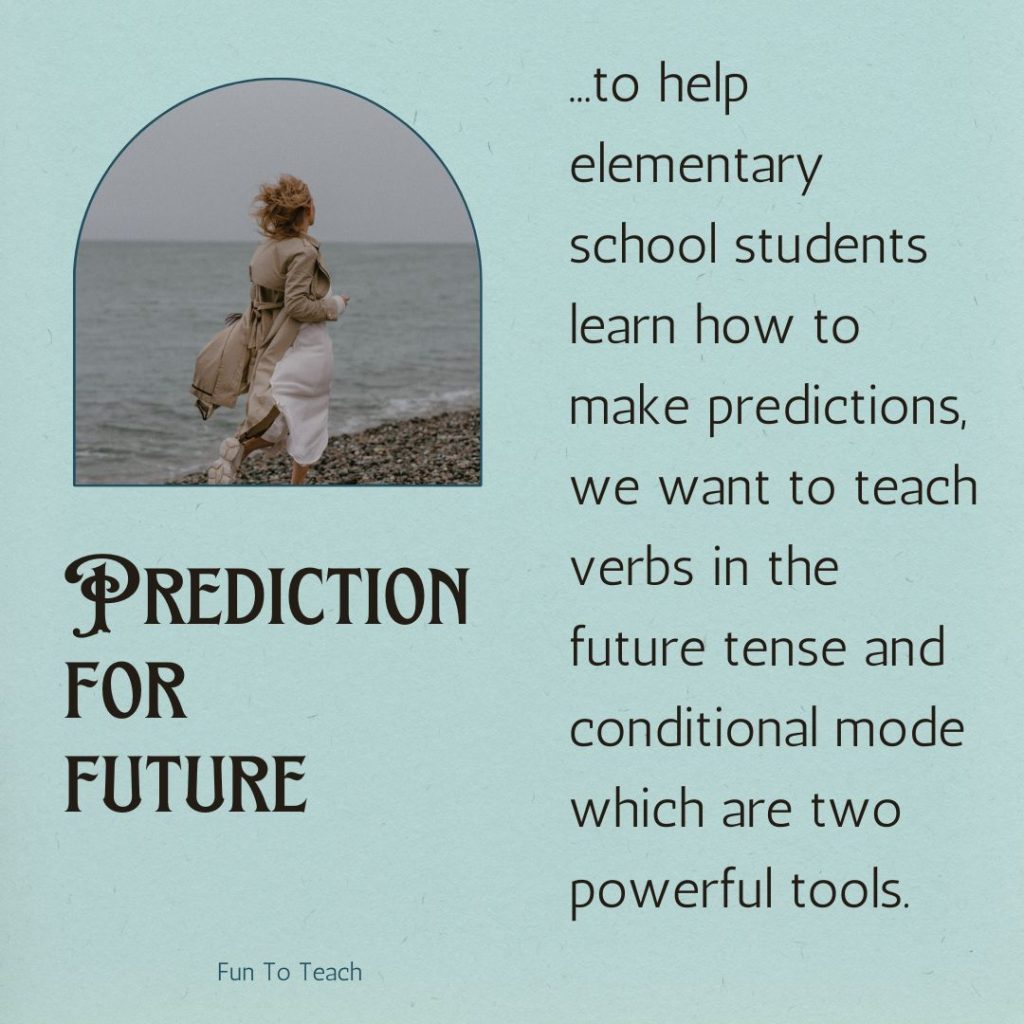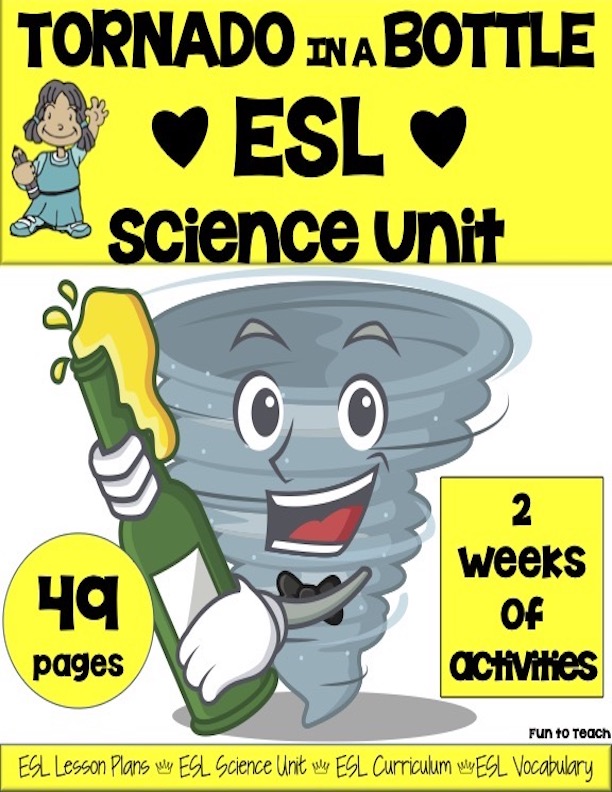Making predictions is an essential part of language learning, especially for students who are learning to speak English as a second language (ESL).

The skill of making predictions is an essential skill to develop in order to become a successful English language learner. For ESL teachers looking to help elementary school students learn how to make predictions, we want to teach verbs in the future tense and conditional mode which are two powerful tools. It is important that English learners (ELs) can understand and practice making predictions using the correct verb tenses. Being able to make predictions correctly is a crucial part of being able to communicate effectively in English.
Before Getting into the Nitty-gritty of Predicting
We know that it is important to lay down some foundational understanding of what making predictions means. In basic terms, a prediction is when someone anticipates what might happen in the future. Then express ideas about this through language. Understanding how to predict requires learners to recognize patterns in their experiences. Students then must use these patterns to structure their thoughts about what could occur in different situations.
Once the basics are understood, ESL teachers should introduce students to using verbs for predicting. To do this effectively, teachers should focus on two key verb forms: the future tense and conditional mode. The present simple form can also be used for making predictions. Remember it is less specific than the other two forms.
One way to teach ESL students about making predictions is by focusing on the two main verb tenses. When we make predictions we use the future tense and conditional mode.
Future tense verbs express actions or events that will happen at some point in the future. For example, “I will go shopping tomorrow” or “It will rain on Sunday.”
Conditional mode verbs express hypothetical situations or outcomes that depend on certain conditions being met. For example:
“If I had enough money, I would buy a car”
“If it rains, we won’t be able to go outside.”
Making Predictions- Using the Future Tense

The future tense gives students the ability to express their predictions about what will happen in the future.
We use this grammar when speaking about something that hasn’t happened yet, but is likely or expected to happen at some point in time.
In English, the future tense is constructed by adding helping verbs such as ‘will’ and ‘shall’ before the main verb. For example: “I will go for a walk later today.” Emphasize that when forming sentences in the future tense for predicting, only modal auxiliary verbs (e.g., will/shall) or verb phrases such as be going to are used instead of ‘will’. For example: “I think that I will go home”.
To practice this grammar structure with students, it can be helpful to use engaging activities such as role-play or drawing; asking students questions like “What do you think will happen next?”
Don’t forget adverbs, conjunctions, and phrase markers
When introducing students to using verbs in the future tense for predicting, it is important that they understand how certain words indicate this form. This includes adverbs such as tomorrow or next week; conjunctions such as before and after; as well as phrase markers like I think/believe/expect + that + clause (e.g., I think that it will rain).
The Conditional Mode and Making Predictions
The conditional mode is another great way for students to express their predictions, particularly hypothetical ones. This form of grammar involves using an if-then statement with a set of two different clauses – one clause that contains an action that could potentially occur, e.g., “if I don’t study tonight” and one clause that contains the result or consequence of that action, e.g., “then I won’t pass my test tomorrow”.
This type of grammar structure helps students get into the habit of thinking ahead and considering all possible outcomes relating to their decisions – e.g. if they don’t study tonight then they won’t pass their test tomorrow. If they do study then they’ll have a better chance of passing.
To practice this structure with elementary school learners, teachers can ask questions such as: “What would you do if…?” and have students complete the sentence as well as explain why they would take that action based on what could potentially happen afterward.
Activities For Making Predictions
Now that ESL students understand both forms of verb prediction, there are several activities teachers can use to practice this skill further with their classes. Some ideas are:
- playing board games
- charades
- creating stories about future events based on given conditions
- designing crossword puzzles related to predictions around thematic topics (e.g., animals).
These activities allow learners not only to practice making predictions but also to use other aspects of language such as grammar and vocabulary at the same time!

Another effective way of teaching ESL students about making predictions is to simulate real-life scenarios in which they must use both future tense and conditional mode verbs in order to make effective predictions. For example, you could set up a situation where one student has lost their keys and another student must predict what they will do next (e.g., “If you don’t find your keys soon, you might call a locksmith”). This type of activity not only helps your student gain confidence when using these verb tenses but also reinforces their knowledge about how these tenses work in different contexts.
In conclusion, having a solid grasp on how to use future tense and conditional mode verbs correctly when making predictions is an essential part of mastering English as a second language (ESL).
By providing clear explanations of the grammar rules associated with these two forms of verbal communication and setting up activities that allow your student to practice using them accurately in context, you can help give them an edge when communicating effectively in English!
Read our blog post on Mistakes with Prepositions here!


No comments:
Post a Comment